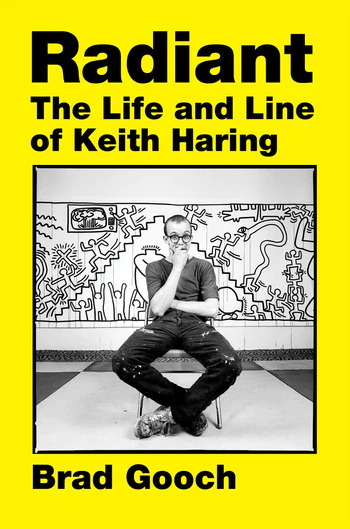“The first believable twentieth-century halo,” one critic called his Radiant Baby, that eureka light bulb of an infant. “It looks as if it’s always been there,” wrote Rene Ricard of the signature tag in “The Radiant Child,” his 1981 Artforum essay on East Village art now best known for boosting Jean-Michel Basquiat to greater prominence. “If Cy Twombly and Jean Dubuffet had a baby and gave it up for adoption, it would be Jean-Michel,” Ricard surmised. And if Dubuffet had a tryst with Warhol, their radiant child would be Keith, his “primitive” Pop flowing from a seemingly endless élan vital cut short by the artist’s death at thirty-one from aids, in 1990. Thirty-four years later, everybody knows his name. But do we still believe that halo?
He was born in 1958 in Reading, Pennsylvania, not to Andy Warhol and Jean Dubuffet, but to Allen and Joan Haring. Keith’s parents encouraged his passion for drawing but frowned on his obsessions. He worshipped Disney. He worshipped Davy Jones. And he worshipped Jesus, deluging his neighborhood in Kutztown with “One Way” stickers of fingers pointed heavenward. Contrary to Haring’s later claims to have embraced only “the paraphernalia and the surrounding symbols” rather than the tenets of Jesus freakdom, his juvenilia betray a real belief in God. And he never abandoned Christian afflatus in his art, so replete with angels and apocalypse, crosses and Madonnas and bleeding hearts.
Haring’s teenage fling with evangelism, Brad Gooch writes in a new biography, Radiant: The Life and Line of Keith Haring, stemmed from a lifelong “desire to belong to something larger.” Drugs helped with this, too. In 1986, Haring would explain in a letter to Timothy Leary that his first acid trip, at age fifteen, “became the seed for all of the work that followed and that now has developed into an entire ‘aesthetic’ view of the world.” By seventeen, Haring had dropped out of the Ivy School of Professional Art (too commercial); acquired a girlfriend; and become a Deadhead, hitchhiking across the United States to sell custom merch. By twenty, he had come out as gay, had his first solo exhibition (at Pittsburgh’s Center for the Arts, where he worked a menial job for two years), and enrolled at the School of Visual Arts.
